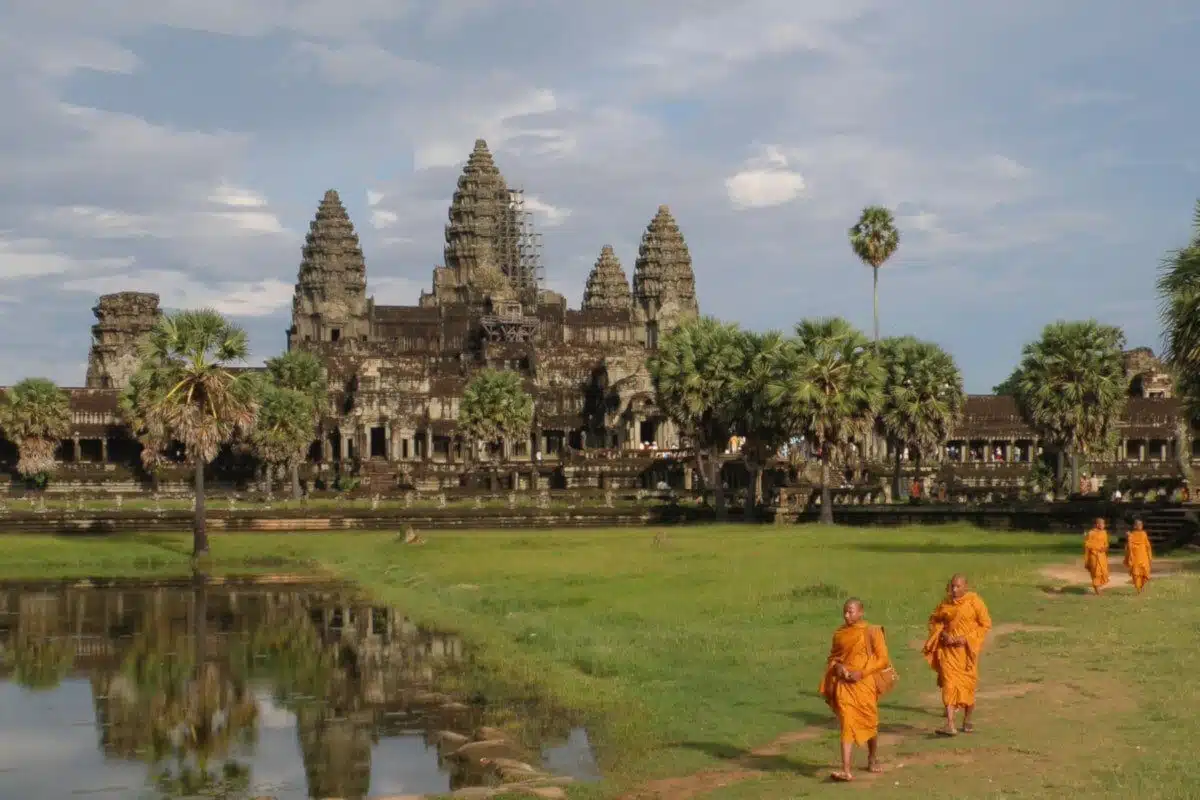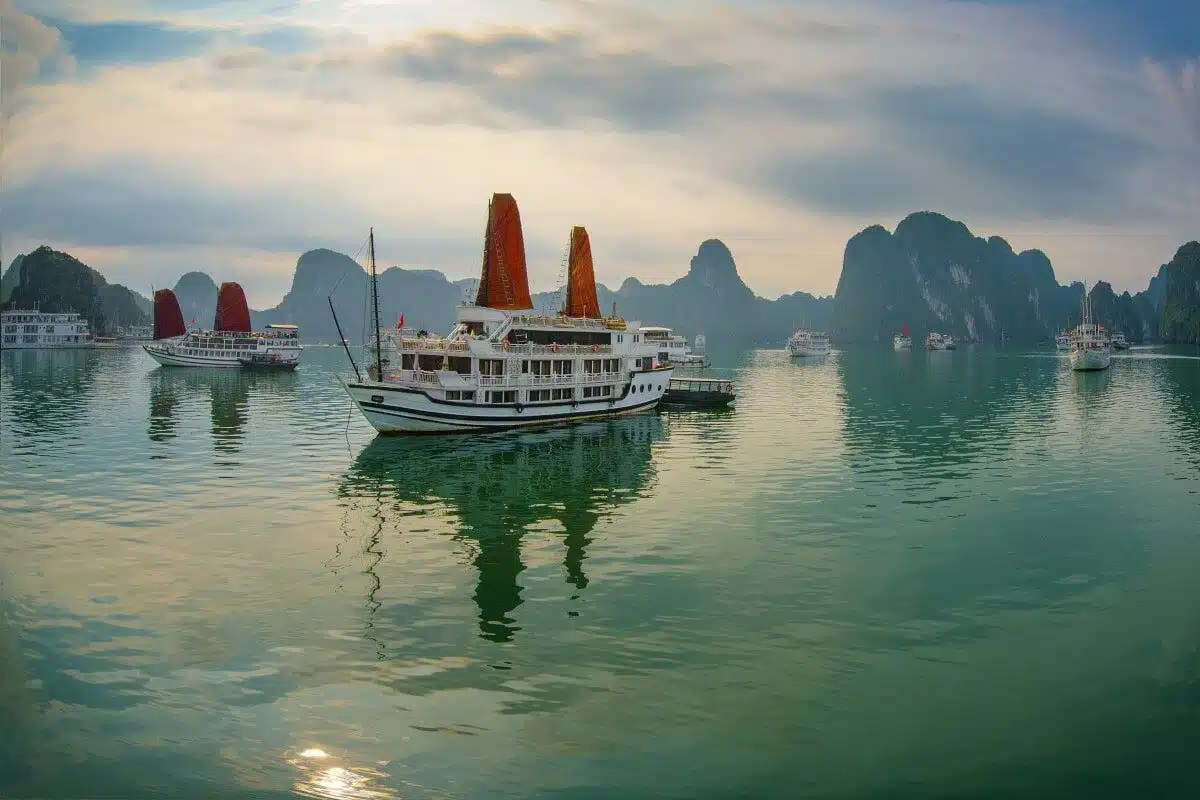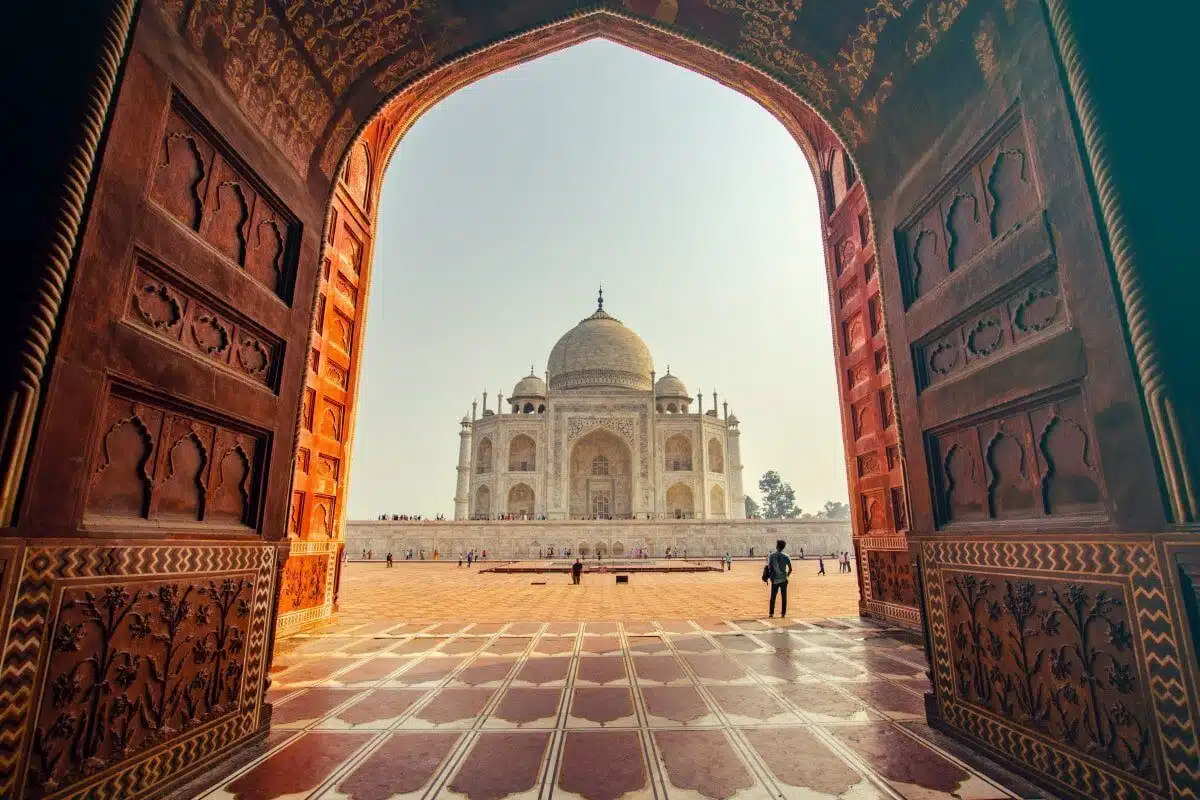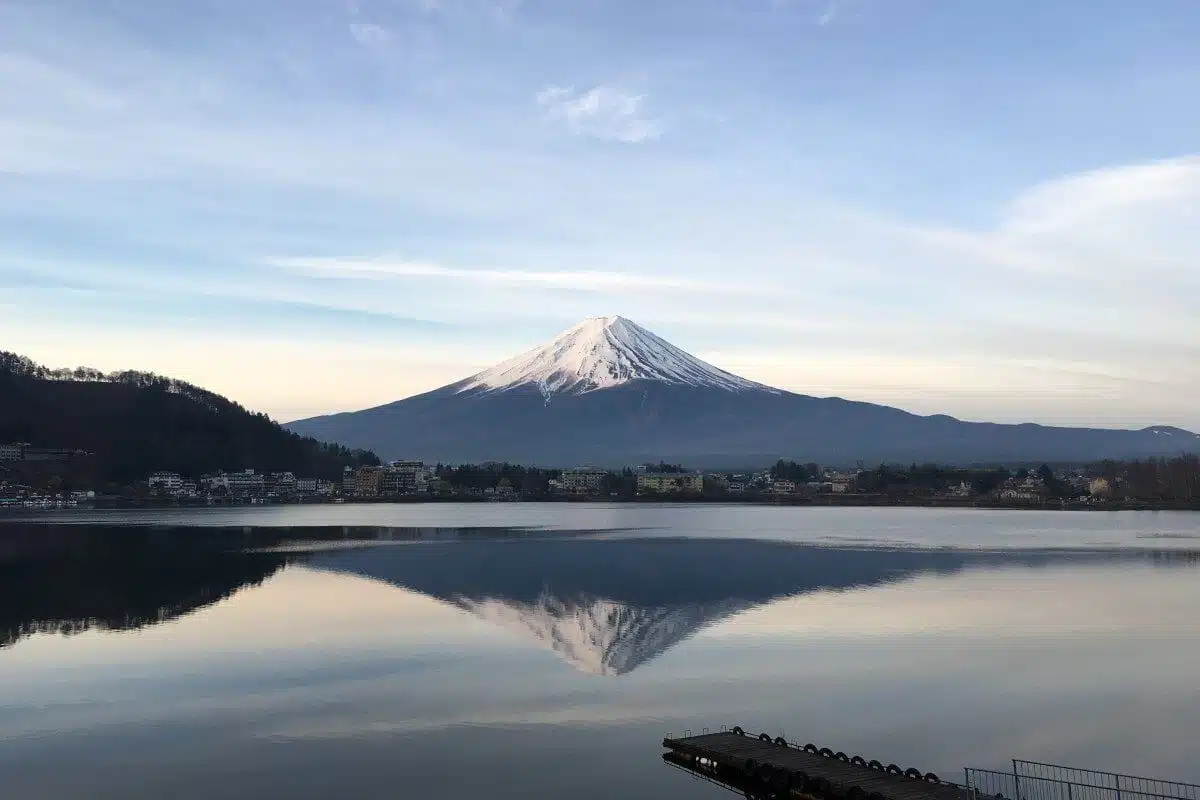
Want to learn about some famous Asia landmarks? I hope this post helps!
Spanning 44.6 million square kilometers, Asia is vast.
The result?
Writing a list of the most noteworthy Asia landmarks almost feels like a lost cause!
From China and Thailand to India, South Korea, and beyond, there must be hundreds (if not thousands) of famous landmarks in Asia.
Seriously, this post could go on for days and I reckon I’d still miss the overwhelming majority out…
Nevertheless!
For the sake of showcasing at least a snapshot of what this incredible continent has to offer, I thought I’d give it a go anyway.
Without further ado, then, here are 12 famous landmarks of Asia that should most definitely be on your travel bucket list!

Here we go, then: 12 famous landmarks in Asia, starting with the inimitable Angkor Wat, Cambodia.
Interested in Asian landmarks? You might also like these…
- 20 Coldest Countries in the World
- 20 Hottest Countries on Earth
- 12 Famous Landmarks in Australia
- 30 Fun Facts about Mexico
- 40 Different Types of Tourism
- The Best Jobs for Adventurers
- 85+ Road Trip Trivia Questions & Games
- 75 Essential Things to Pack for Travel
- Key Features of the Experience of Travel
12 Asia Landmarks Not to Miss!
This list is by no means exhaustive. In fact, give the size of Asia, it could be the most in-exhaustive list ever created…
However, every single one of the famous Asia landmarks to come most definitely deserve a place on it! Let’s dive in…
1. Angkor Wat: Cambodia (Infamous Southeast Asia landmarks)
Angkor Wat is a sacred temple built by the Khmer Empire around the 12th century.
Located in Cambodia in the town of Siem Reap, it’s recognized as one of the largest religious structures in the world, and one of the top Southeast Asia landmarks.
It spans more than 300 acres across and is a sight you have to see if you’re planning a visit to this part of Asia.
At the centre of Angkor Wat, you’ll find a group of four towers surrounding a central spire. Together, the structures form a quincunx (a geometric pattern of five points that creates a cross when viewed from above).
This temple complex is part of the greater Angkor Archaeological Park, which is one of Asia’s most visited attractions.
In addition to an outer wall, the Angor Wat temple is also protected by a three-mile moat that spans the perimeter. There are three rectangular galleries to visit, arranged together in a staggered formation.
A breathtaking display of magnitude and might, this is a once-in-a-lifetime destination.
You’ll also find other temples in the complex, including the Bayon Temple and the Ta Prohm Temple. I suggest getting there early, as the sunrise over Angkor Wat is a sight to behold!
2. Jingmaham Living Root Bridge: India
If you’re an avid tourist, then you’ve likely seen plenty of bridges throughout your travels.
However, it’s unlikely you’ve ever seen one as intriguing or unique as the Jingmaham Living Root Bridge.
As its name implies, this one is made from tree roots— rubber trees, to be exact!
As the roots grow into one another, they compact into a strong structure that can hold up to 50 people at the same time!
Top tip:
If these kinds of natural phenomena pique your interest, then plan to stop at the Double Decker Living Root Bridge in Sohra, India.
This picture doesn’t do it justice, but trust me, Southeast Asia landmarks don’t get much more breathtaking than Halong Bay in Vietnam!
3. Halong Bay: Vietnam
In the Nom characters of the Vietnamese language, Ha Long translates to “descending dragon”.
According to ancient legend, hostile invaders attempted to enter Vietnam via the sea shortly after its formation.
To save his people, the reverend Jade Emperor conjured the Mother Dragon and her children to descend and fight the attackers.
They did so, and saved the country from impending doom.
Today, Halong Bay stands as a gorgeous symbol of Vietnam’s enduring beauty. In fact, it was recently named as one of the New Seven Wonders of the World.
The bay consists of 1,600 limestone islands and inlets, covering a distance of more than 1,500 square kilometres.
4. Komodo National Park: Indonesia
No discussion of famous landmarks in Asia would be complete without a mention of Komodo National Park.
Covering more than 1,700 square kilometres across Komodo, Padar, and Rinca Islands, it gorgeously showcases Indonesia’s breathtaking natural beauty.
As you might expect, you’ll find plenty of Komodo dragons here.
In fact, this park is one of the only areas of the world that the oversized lizards naturally inhabit! As long as you keep your distance, I imagine it’d be thrilling to spot one in the wild!
Keep your eyes peeled by the crystal clear beaches, where they love to sunbathe.
Keep in mind that the primary goal of Komodo National Park is to protect the Komodo dragon and other endangered Indonesian wildlife.
As such, you’re likely to encounter plenty of fascinating species, including more than 10 different species of snakes! The park’s also home to vibrant coral reefs and a rich marine ecosystem.
This is another recent addition to the New Seven Wonders of the World, and it’s easy to see why.
Petra’s a prime example of how famous landmarks of Asia will blow your mind with their beauty and uniqueness.
5. Petra: Jordan (Famous Asian Buildings!)
It’s hard to imagine a city going undiscovered for centuries, but that’s exactly what happened to Petra.
This awe-inspiring ancient city lay largely untouched until 1812.
That year, Swiss explorer Johann Ludwig Burkhardt discovered the ruins and the rest is, well…history.
Today, Petra is one of the most recognizable and iconic landmarks of Asia. If/when you visit, allow plenty of time to explore all of the sites, including the Ad Deir Monastery.
Built by the early Nabataeans more than 2,000 years ago, it’s carved into the face of the rock and boasts mind-numbing, towering beauty.
While tickets are said to be a little steep, this is an incredible spot to budget into your Asian landmarks vacation.
6. The Great Wall of China
Arguably one of the most famous landmarks in Asia, the Great Wall of China spans exactly 21,196 kilometres long, or 13, 170 miles.
With these numbers, it’s easy to see why it took more than 2,300 (inconsecutive) years to complete. Some people even say you can view this sizeable structure from space!
In all, four individual Chinese dynasties played a part in constructing the Great Wall.
This includes the Zhou Dynasty (770 to 221 BC), Qin Dynasty (221 to 207 BC), Han Dynasty (206 BC to 220 AD), and the Ming Dynasty (1368 to 1644).
Originally built to establish and safeguard China’s territory, it’s now the top tourist spot in the country, attracting more than 10 million people every year.
Contrary to popular belief, this isn’t one great, continuous wall.
Rather, it’s constructed of multiple smaller walls and fortifications.
If you were to walk the entire span, you’d cover more than 15 distinct regions across northern China, as well as 23 individual watchtowers.
While that feat may be impossible, you can hit the highlights. Be sure to schedule a stop at The Great Wall at Badaling, which you can access right outside of Beijing.
Asian landmarks don’t come much better-known than the beautiful Taj Mahal!
7. Taj Mahal: India (Famous Monuments in Asia!)
When people picture the Taj Mahal, they tend to think of mesmerizing architecture and gilded finishes- not love.
Yet that’s exactly what this mausoleum complex represents in India.
One of the most easily recognizable monuments in Asia, it stands as a testament to long-lasting devotion and affection.
In 1632, Mughal emperor Shah Jahan commissioned the complex to hold the remains of his late wife, Mumtaz Mahal, who died after giving birth to the couple’s 14th child.
It took more than two decades to complete to his specifications, which cut no corners and paid a majestic tribute to his beloved partner.
Today, more than eight million tourists visit the Taj Mahal every year and it remains an enduring symbol of the country’s spirit.
8. Registan Square: Uzbekistan
In 2019, Uzbekistan officially ushered in visa-free travel, to the delight of curious tourists everywhere! Now it’s become one of the most popular sites in Central Asia.
When you visit Samarkand’s Registan Square, you’ll find three separate madrassas (educational institutions):
Ulugbek, Sherdor and Tilla Kari.
The former home of the ancient Timurid Empire, Samarkand’s roots go back to 1420 AD.
It was once home to Amir Timur, who established an Islamic learning centre in this location. Here, students would gather to study art, culture, astronomy, and other subjects.
In medieval times, Registan Square also hosted a lively bazaar.
It’s easy and economical to visit the Square, so plan a detour to take in the rich culture! Explore some of the famous Asian buildings and take a step back in time.
One of the best landmarks Asia has to offer is found in Japan: Mount Fuji.
9. Mount Fuji: Japan
If you’re a nature lover with an interest in Japan, then Mount Fuji should definitely be on your bucket list!
Reaching 3,776 metres high, you’ll find it on the island of Honshū.
Though it’s technically still an active volcano, its last eruption was way back in 1707, so it’s widely regarded as safe and accessible.
If you want to climb the mountain a little, then the easiest way to do so is to take a bus from Shinjuku to the Subaru Fifth Station.
Aim to arrive in the afternoon, and begin your climb. There are many small huts dotting the mountain, where you can stay overnight with a reservation.
Get up early to watch the sunrise, and keep climbing.
While some experienced travellers might be able to make the trek in one day, this is one to slow down and savour.
10. Chocolate Hills: The Philippines
Located on the island of Bohol in the Phillippines, the Chocolate Hills are a series of hills that measure between 30 and 120 metres in size.
In all, there are 1,268 different hills, which get their unique moniker from the colourful transition they experience once a year.
When the weather turns warm in the summer, the once-lush hills become chocolate brown as the vegetation dies off. The result?
A gorgeous display of natural beauty that you have to see to believe.
While there are many different tales and legends that seek to explain the phenomenon of the hills, there’s one that stands out above all the rest.
According to one story, there was a menacing carabao that used to roam a nearby town, destroying all of the crops.
Frustrated, the townspeople gathered together all of their spoiled food. Then, they placed it right in the path of the carabao so he wouldn’t miss it.
He gorged himself on the feast, but his stomach couldn’t handle it. What happened next?
He formed the Chocolate Hills, of course!
Mount Everest isn’t just one of the most famous landmarks in Asia, it’s one of the most infamous places in the entire world!
11. Mount Everest: Nepal and China
Located on the border of Nepal and China, Mount Everest soars a stunning 8,848 metres (or 29,029 feet) above sea level.
For centuries, it’s been the pinnacle of every mountain climber’s dream, notably because it’s the tallest mountain in the world.
More than 4,000 climbers have successfully reached the peak of Mount Everest, which requires supplemental oxygen the higher you go.
In all, 10,155 have attempted the feat and more than 300 people have died trying.
Even if you aren’t planning to scale the beast yourself, it’s worth visiting. You may also consider hiking to Everest Base Camp, which takes around two weeks to complete.
12. Grand Palace: Thailand
As you explore all of the landmarks Asia has to offer, there are plenty of dazzling Thai destinations to discover.
However, one of the most prolific and awe-inspiring is the Grand Palace. Located in Bangkok, it’s one of the top scenic sites in the country.
Here, you’ll find the famed Wat Phra Kaew temple, which holds the distinction of being the grandest Buddhist temple in Thailand.
Another name for the temple is the Temple of the Emerald Buddha, due to the emerald Buddha statue located inside. According to one legend, the statue came from India and travelled across Asia before finding its permanent spot in the Grand Palace.
It’s said to have brought peace and prosperity to every country it visited along the route.
Visit These Famous Landmarks in Asia
As the world’s largest continent, trying to settle on a handful of the most famous landmarks in Asia is no mean feat.
There are simply too many incredible places to choose from!
On the flip side, it also means anywhere you go will delight, inspire, and amaze you. Whichever country you visit, you’re only a stone’s throw from another landmark in Asia.
I hope this post has introduced you to a few of them! To learn more about one of the most popular travel destinations in Asia, Japan, click here!




